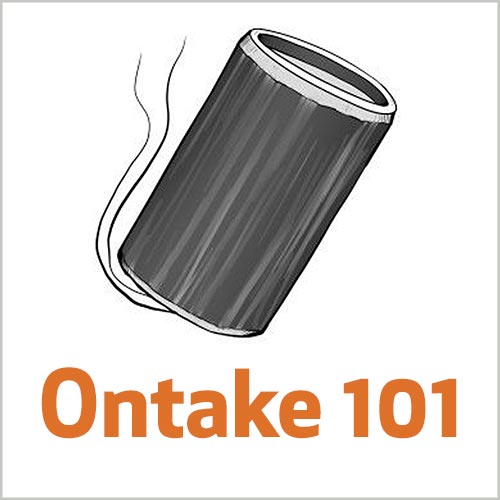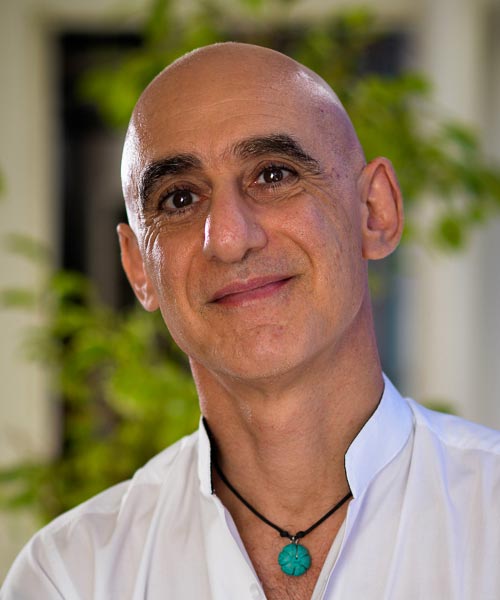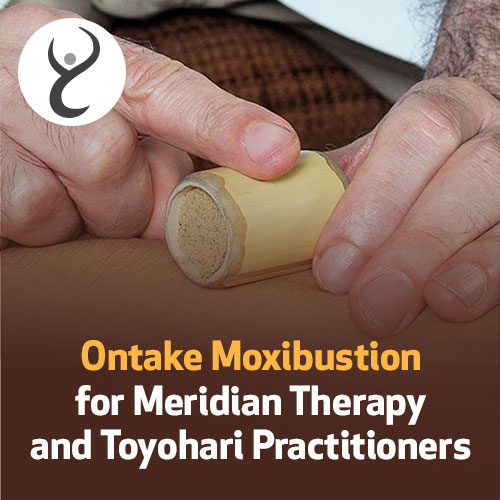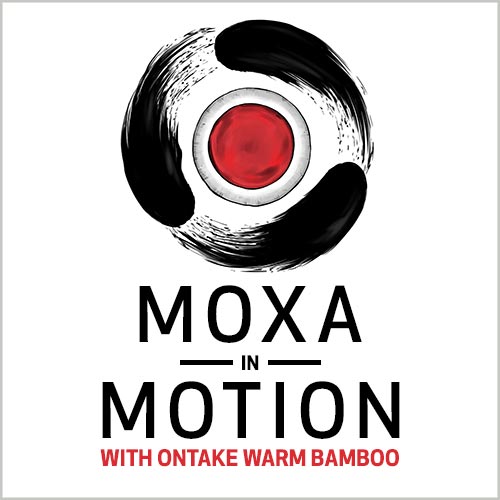Treating the Nose, Eye and Ear with Ontake
The Ontake Method is a system of rhythmic moxibustion method with two key components: pressure and rhythm. A short piece of bamboo is filled with moxa wool. When the moxa is ignited, the bamboo gets hot and can be applied to the skin. The bamboo can be held, tapped, pressed, or rolled rhythmically along the acupuncture channels and on specific points.
Additionally, with the use of a metronome, these techniques can be applied rhythmically at a specific number of beats per minute based on Dr Manaka’s meridian frequencies. This simply means that the Ontake is applied in time to a metronome, according to the meridian being treated. Here is a list of Dr Manaka’s meridian frequencies.
Table 1 Meridian Frequencies Grouped by Channel
Ontake can be deployed using any number of other theoretical models, including excess and deficiency, Dr Tan’s Balance Method, and Hirata’s Zones. You can use it at both root and branch level, and as a branch tool, it is highly effective for pain relief. The best thing about it is that it does not require you to change what you do in your practice or swap paradigms. Just like with cupping or moxa, you can add it to your toolbox and integrate it with your personal treatment model. This includes channel-based therapies which don’t use needles such as Shiatsu and Tuina.
This article explores using Ontake at the branch level for symptom relief. None of the branch protocols below are standalone treatments. These routines should follow or be integrated concurrently with your preferred root treatment style. The numbers in brackets following each technique show the frequency of beats per minute for the meridian. The beauty of Ontake is that it is rarely used to treat individual acupoints. Instead, you can think of it like an agile and mobile moxa box, treating lines or broader areas.
Caution: When working on the head, beware of salient anatomy, such as the eye, nose, alae nasi, tragus and chin, protruding into the concave mouth of the bamboo.
Sinus Problems / Cold / Allergic Rhinitis
In Japanese moxibustion, nasal problems are often treated with moxibustion at tender points on Du Mai, such as DU 22 or DU 23.[1] With bamboo, you can quickly treat more than a single point.
Sinus sequence
Treating sinus problems
- Start on the midline of the face between the eyebrows at Yintang and press softly with the side of the bamboo, working your way superiorly to DU 20 and back again, noting any tender areas along the way (104). This feels very relaxing and can be continued for a minute or two.
- Check out the tender areas again and now focus on each one, either rolling slightly harder or gently knocking with the index finger at 104 beats per minute on the side of the bamboo. Knocking on the skull is welcomed by some patients and not tolerated well by others, but in all cases, knock lightly and for a short duration. Follow up with more rolling. By now, the nose should already be feeling clearer. It is useful to distinguish between sensations on the skull. Sometimes, the points feel bruised or tender, with a feeling of induration. These points respond well to light knocking and rolling. Other points feel crunchy as if there are crystals underneath the bamboo, reminiscent of a car driving on gravel. These areas respond much better to rolling.
- Tap and close in horizontal lines on the forehead from one side to side to the other at 132 beats per minute or unaccompanied.
- Press or touch from ST 2 to ST 4 (132).
- Press with the side of bamboo on the side of the nose (126 or 108), or sparrow peck with the lighted end without making contact.
- Palpate the large intestine channel and lung channel on the forearm and treat kyojitsu there, focusing mainly on tight or painful areas near LI 10 and LU 6.
Upper back points such as BL 11 to 15 are also useful.
Eye Problems
Tapping around the eye.
- Press around the orbit of the eye with the side of the bamboo (108).
- Roll along any crunchy areas you discover along the orbit (108 or channel targeted frequency).
- Roll the forehead along the gall bladder channel (120).
- Cover the eye with a tissue or thin cloth and turn the bamboo on its side. Hold lightly on the eyelid for four beats, above, level with, and below the pupil (108).
- Roll from Yintang to DU 20 along the midline of the head (104) and slightly laterally along the bladder channel (112), focusing on soft or reactive areas.
- Turn the patient over and roll the back of the occiput (112).
- Tap DU 17, just above the occiput until it feels warm (104).
- It may also be useful to treat the neck and shoulders as in the Bamboo Mini treatment or to tap the whole bladder line on the back.
Ear Problems
Many ear problems arise because the circulation of qi and blood is impaired. This can include pain in the ear, tinnitus, or hearing loss. The gall bladder channel makes three broad passes over or around the ear (120). The triple burner channel closely follows the contours of the helix (152). The kidney (120) opens into the ears.
- Palpate for tender or crunchy points along the branches of the gall bladder channel, especially the one encircling the ear, and treat with gentle tapping or rolling (120).
- Press or tap over triple burner around the ear (152).
- Tap directly over the ear, until it feels warm (120).
Repeat all three steps, focusing on painful points between GB 7 and GB 12.
Comment
Ontake applied in this way can be surprisingly fast. Symptoms change very rapidly, so five minutes of treatment is often enough. Look for texture changes in the skin. Sometimes it’s a bit rough when you start treating an area but then it becomes warmer and smoother. If it changes texture like this, it’s time to move on.
Patients love Ontake treatment. Warming the ear, for example, is surprisingly comforting. What’s more, Ontake works at different levels: the smell of the smoke, the ticking of the metronome, the mechanical stretching of the soft tissues and most importantly, the gentle warming of the skin all combine to create a deeply relaxing treatment. These are all anchors that bring back the deep sense of relaxation, each time they come. The only downside is that they keep asking for Ontake on subsequent visits!
So it’s a versatile tool with benefits to both your patient and your practice. It’s simple to learn and easy to apply. I believe that within a few years, it will be as essential a piece of kit as your needles!
Other Courses By This Teacher




Overview
GETTING STARTED WITH THE ONTAKE METHOD
Moxibustion is ancient. Even more ancient than needling. In modern acupuncture, however, it is often considered too time-consuming, too risky or too difficult to master. And yet the classics say: for chronic conditions, moxa has no equal.
Coming to the rescue of time-poor, risk-averse, present-day acupuncturists is the Ontake Method from Japan. This innovative approach uses a piece of bamboo filled with burning moxa wool to roll, tap and press on the meridians using a metronome programmed to each meridian's frequency. The rhythmic application of heat, frequency and pressure triggers rapid shifts in your patients' body condition and mood but this method generates only a little smoke.
In this highly practical introductory module you will:
(1) Discover what Ontake is and the kind of things the Ontake Method can do.
(2) Learn how to load, light and extinguish the Ontake.
(3) Acquire three basic strokes to get you started: tapping, rolling and super-knocking.
(4) Explore a simple treatment model for the rapid relief of pain anywhere on the midline of the body with Ontake, including sore throat, neck pain, middle back, pubic symphysis and epigastric pain.
Learning Objectives
- View supplementing and draining application methods, namely rolling, tapping and super-knocking on the skin with Ontake
- Load, light, extinguish, clean, reload, relight Ontake
- Apply a theoretical model for the treatment of midline pain by pairing anatomical opposite points on the Ren, Du, kidney and bladder channels.
- Describe the origins of Ontake in the 1960s and list three main spheres of application: root, branch, adjunctive treatment.
Your Teacher

Oran Kivity
British acupuncturist Oran Kivity trained in Europe, China, and Japan. In practice since 1987, he has ignited interest in the Ontake Method, a rhythmic moxibustion method from Japan.
Categories
Tags
Ontake Moxibustion for Meridian Therapy and Toyohari Practitioners
Treating the Back and Consolidating the Pulse
with Oran Kivity
See In StoreOverview
The Ontake Method uses a Japanese moxibustion tool made of bamboo filled with burning moxa wool to roll, tap and lightly press on the meridians. The rhythmic application of heat and pressure, especially on the back, consolidates the pulse and, working with the root treatment, can trigger rapid shifts in patients' body condition and mood.
This highly enjoyable two-hour recorded webinar explores Ontake's origins in Japan, with an overview of historical and contemporary uses. Using numerous short video clips, dynamic presentations, and frequent breaks for questions and reflection, students learn how to load and light Ontake and contrast the different application methods for deficient and excess areas along channels.
In this highly practical introductory two-hour, you will learn:
(1) How to load, light and extinguish Ontake
(2) Protocols to augment the root treatment
(3) Protocols for assessing the lustre of the skin and balancing kyo and jitsu with Ontake
(4) A simple routine for treating the back to consolidate the pulse
ONTAKE 101. Oran Kivity also has another short course called Ontake 101. What’s the difference between that one and this one?”
This webinar re-presents the Ontake 101 information in a live setting with participants' questions and answers, focusing on treating the back instead of treating midline pain. This one is two hours; Ontake 101 is one hour.
Depending on your preference and approach, you should choose either this module or Ontake 101.
Learning Objectives
- Learn how to load, light and extinguish Ontake.
- Discover the origins or Ontake, and theoretical models for its application.
- Apply a protocol to augment the root treatment of Meridian Therapy or Toyohari.
- Assess the lustre of the skin and balance deficiency / excess (kyo and jitsu) with Ontake.
- Adapt a simple protocol for treating the back to consolidate the pulse.
Your Teacher

Oran Kivity
British acupuncturist Oran Kivity trained in Europe, China, and Japan. In practice since 1987, he has ignited interest in the Ontake Method, a rhythmic moxibustion method from Japan.
